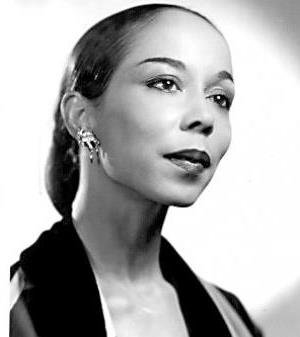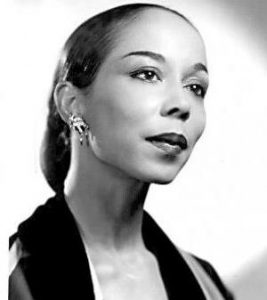
Janet Collins (March 7, 1917 – May 28, 2003) was a ballet dancer, choreographer, and teacher. She performed on Broadway, in films, and appeared frequently on television. She was among the pioneers of black ballet dancing, one of the few classically trained Black dancers of her generation.
Collins was 10 when she started taking private lessons at a Catholic Community Center. By the time she was 15, she had studied with some of the more noted teachers around and had earned an audition with Leonide Massine, the director of the Ballet Russe de Monte Carlo.
Janet Collins was born in New Orleans, and at the age of four moved with her family to Los Angeles, California, where Collins received her first dance training at a Catholic community center. She studied primarily with Carmelita Maracci, Lester Horton, and Adolph Bolm, who were among the few ballet teachers who accepted black students.
In 1932, aged 16, Collins auditioned with success for the prestigious Ballet Russe de Monte Carlo, but as she was required to paint her face and skin white in order to be able to perform, she did not join the company. A turning point in her dance career came in November 1948, when she performed in a one-night program at the Las Palmas Theater in Los Angeles. She earned excellent notices. In 1948, she moved to New York and got the chance to dance her own choreography on a shared program at the 92nd Street YMHA.
In 1949, Collins earned glowing reviews in a variety of performances, including the Broadway production of Cole Porter’s musical “Out of This World.” It was in that role that she was noticed by Zachary Solov, then the ballet master of the Met.
In 1951 Janet Collins won the Donaldson Award for best dancer on Broadway for her work in Cole Porter’s Out of This World. She also performed in Aida, Carmen, and was the first Black ballerina to perform at the Metropolitan Opera. She could not tour in parts of the Deep South, owing to her race. In later life Collins taught modern dance at Balanchine’s School of American Ballet in New York City, and at Marymount Manhattan College in New York City.
Janet Collins struggled repeatedly against racism, which did not spare the world of professional ballet dancing. Not many African-American dancers and performers achieved the successful career she was able to attain, and she paved the way for others to follow. In 1951, Janet became the first African American to be hired full-time by the Metropolitan Opera in New York. Marian Anderson, the first to sing there, did not perform until 1955. In the year Collins retired, Arthur Mitchell joined the New York City Ballet.
In 1974, the Alvin Ailey American Dance Theater paid homage to her and Pearl Primus as pioneering black women in dance. She received her first dance training at a Catholic community center and went on to study primarily with Carmelita Maracci, one of the few ballet teachers who accepted black students, and with Lester Horton and Adolph Bolm. Janet was also collaborated with well-known dancer Katherine Dunham and later joined the Dunham Company before her career took off.
Janet Collins’ dance reputation today resides primarily in her role in breaking the colour barrier; the constraints on Black classical dancers were too strong for her to have a vibrant performing career. In some Southern cites, race laws kept her off the stage, and her parts were played by understudies. After a performance in Toronto, Dance Magazine reported some years ago, she and a colleague approached the door of an obviously crowded restaurant only to be turned away with the curt statement that the establishment was closed. However, her original choreography, which she performed in solo tours, was clearly of note, although few records survive. In her late forties she retired, turning to religion and finding comfort as an oblate in the Benedictine order. She was also an accomplished painter.
In 2007, in recognition of Collins’ great work and dedication, her renowned cousin Carmen De Lavallade established the Janet Collins Fellowship to honor aspiring talented ballet dancers. She received a Candace Award from the National Coalition of 100 Black Women in 1989. Janet Collins broke the color barrier and became the first African-American to dance full-time for the Metropolitan Opera Ballet in Aida on November 13, 1951, a few years before Marian Anderson broke the same barrier for singers in 1955. This excellent biography of Collins with 63 illustrations,16 in color, recounts how she goes on to star in ballets for La Gioconda and Samson et Dalila.
In failing health, she moved to Fort Worth from Seattle in 2000 to be closer to her brother, Ernest Patrick Collins, who survives her, as does her sister, Betty Wilkerson of Pasadena, Calif. Janet Collins died in 2003 at the age of 86, in Fort Worth, Texas.

